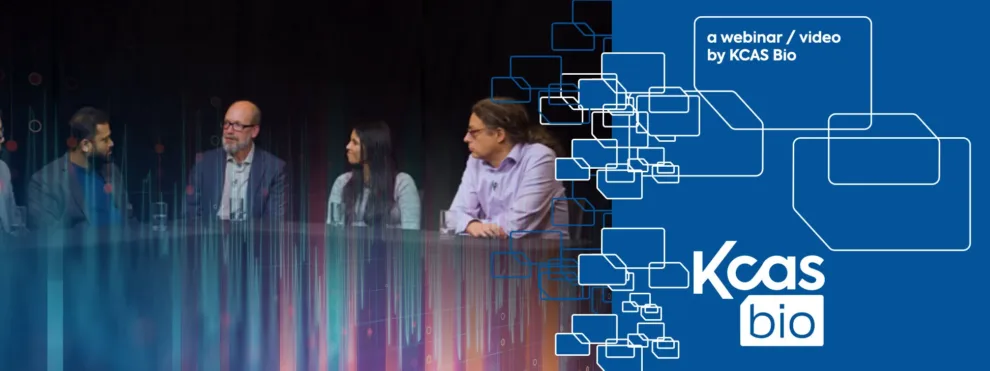For researchers and professionals working in the biopharmaceutical industry, an upcoming Bioanalysis Zone Panel Discussion will offer a unique opportunity to stay informed about the latest advancements in quantitative analysis techniques.
Research projects can only succeed when selecting the appropriate biopharmaceutical quantification technique. Staying up-to-date on current quantification practices is vital for saving research dollars and time.
Assessing Industry Practices to Date
The landscape of biopharmaceutical quantification is evolving rapidly. Driving this fast-paced evolution is the biopharma industry’s need for enhanced specificity and sensitivity with regard to analytical methods.
Traditional approaches — such as Ligand Binding Assays (LBA) and UV detection coupled with High-Performance Liquid Chromatography (HPLC separation) — have long been the cornerstone of quantitative analysis in the biopharmaceutical industry.
However, the inherent limitations of LBAs — particularly their susceptibility to matrix interference and the need for specific reagent development — have spurred the integration of Liquid Chromatography-Mass Spectrometry (LC-MS) as a hybrid approach.
How Ligand Binding Assays Help Assess Samples
Ligand Binding Assays (LBA) are analytical techniques utilized in biopharmaceutical quantification to measure the interaction between a ligand (usually a drug or biomolecule) and its binding partner (such as a receptor or antibody).
LBAs are commonly employed in the biopharmaceutical industry to assess the concentration of specific drugs or biomolecules in biological samples. These assays rely on the principle of molecular recognition. Scientists can then quantify the binding event between the ligand and its target. Molecular recognition occurs through various detection methods, including fluorescence, luminescence, and radioactivity.
UV Detection, Properly Applied
UV detection coupled with High-Performance Liquid Chromatography (HPLC) separation is another widely used approach for biopharmaceutical quantification. This technique separates the sample containing the target molecule into its components using HPLC, a powerful chromatographic method.
UV detection involves measuring the absorbance of light at specific wavelengths by the separated molecules. These often have distinct UV absorption spectra. By correlating the UV absorbance with the concentration of the target molecule, researchers can accurately quantify the amount of the biopharmaceutical compound present in the sample.
The UV detection method offers high sensitivity and specificity, making it valuable for research and quality control purposes in the biopharmaceutical industry.
How Hybrid Methodology Bridges Gaps in Quantification
Combining Ligand Binding Assays (LBAs) with Liquid Chromatography-Mass Spectrometry (LC-MS) offers significant advantages for biopharmaceutical quantification.
LBAs, while sensitive, often lack specificity due to potential interference from endogenous compounds or closely related molecules in complex biological samples. Conversely, LC-MS provides exceptional specificity and sensitivity in detecting and quantifying analytes based on their mass-to-charge ratio and fragmentation patterns.
By integrating LBAs with LC-MS, researchers can harness the strengths of both techniques. LBAs can provide initial screening and enrichment of target analytes, while LC-MS offers precise identification and quantification.
LC-MS enhances specificity by verifying the presence of the target molecule based on its unique mass and fragmentation profile. This way, LC-MS reduces the likelihood of false positives or interference from other compounds. This hybrid approach enables more accurate and reliable quantification of biopharmaceuticals in complex biological matrices. Utilizing a hybrid approach can ultimately improve the efficiency and reliability of drug development and quality control processes.
Navigating the Hybrid Assay Landscape
LC-MS/MS has emerged as a powerful tool for quantifying therapeutic peptides, proteins, and monoclonal antibodies (mAbs) in complex biological matrices. By harnessing the specificity and sensitivity of mass spectrometry, LC-MS/MS offers a solution to the challenges faced by LBAs. Using a hybrid approach can provide accurate and reliable quantification even in the presence of interfering substances.
In an upcoming panel discussion at the Bioanalysis Zone, a team of experts will explore the advantages of LC-MS/MS hybrid assays and their potential to overcome the limitations of traditional quantification methods.
During the panel discussion, panelists will delve into the nuances of hybrid assays, examining key considerations such as equipment requirements, digestion protocols, and the potential for multiplexing. By critically evaluating the pros and cons of hybrid approaches, researchers will gain valuable insights into their applicability across different biopharmaceutical contexts.
Moreover, the panelists will discuss the requirements for broader adoption of hybrid techniques. The shared hope lies in paving the way for advancing biopharmaceutical quantification methodologies.
Register Today to Learn How Researchers Are Helping Shape the Future of Biopharmaceutical Analysis
The Bioanalysis Zone invites you to participate in an encore presentation of this insightful panel discussion on Wednesday, February 21, 2024, at 07:00 PST, 10:00 EST, and 15:00 GMT. Take advantage of this chance to deepen your understanding of hybrid assays and contribute to the ongoing dialogue shaping the future of biopharmaceutical analysis. Secure your spot today by registering at the Bioanalysis Zone Panel Discussion page.

